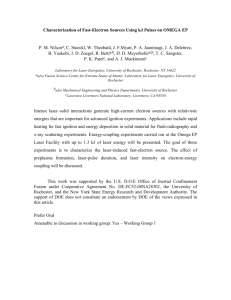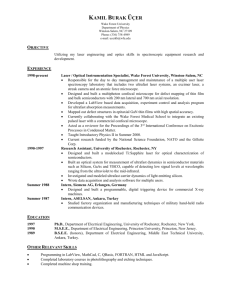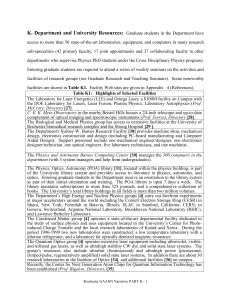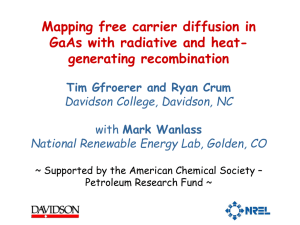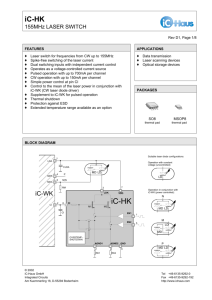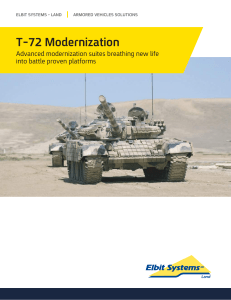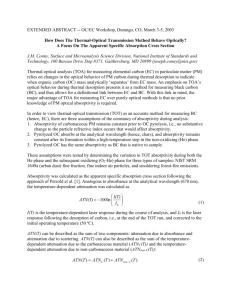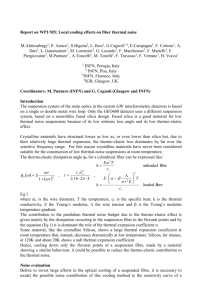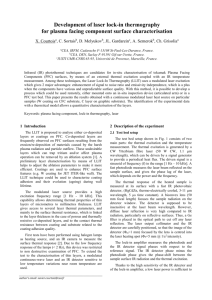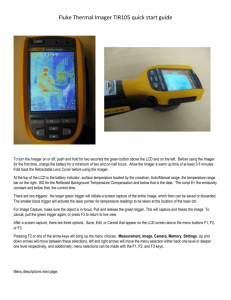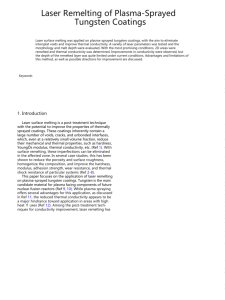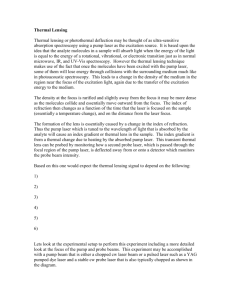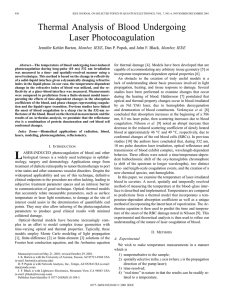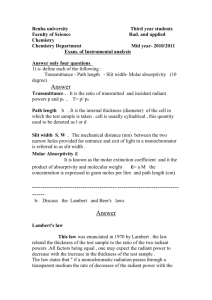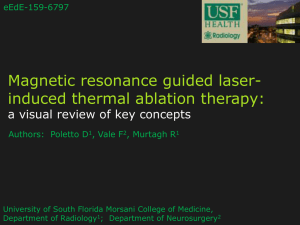High-power THz to IR emission by femtosecond laser
advertisement
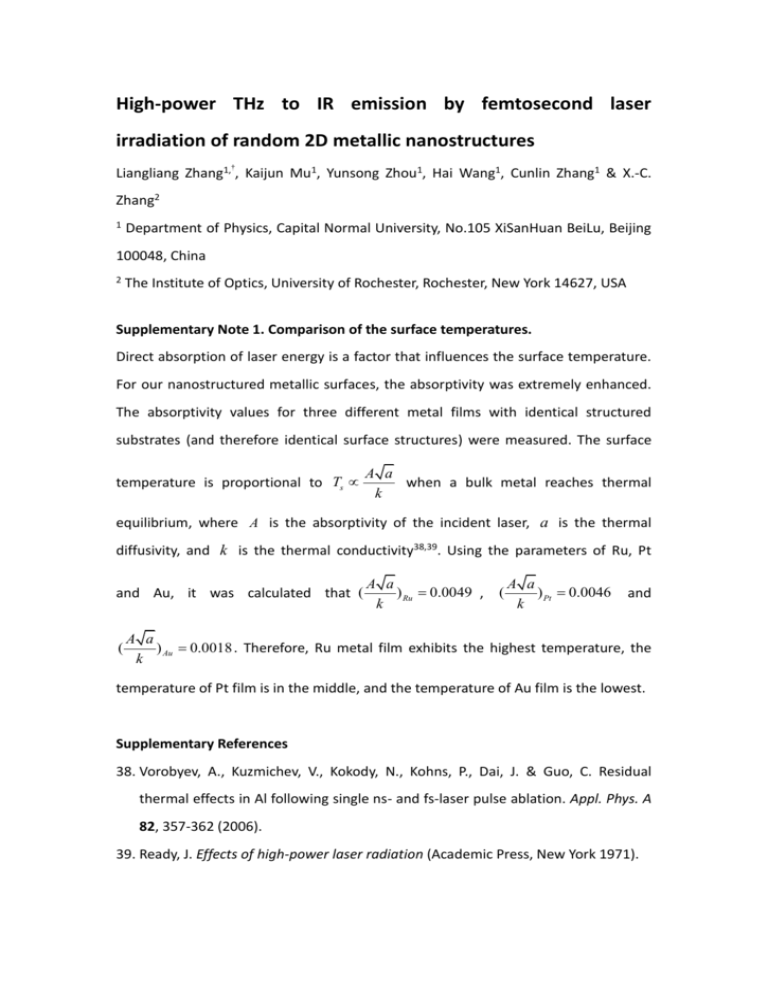
High-power THz to IR emission by femtosecond laser irradiation of random 2D metallic nanostructures Liangliang Zhang1,†, Kaijun Mu1, Yunsong Zhou1, Hai Wang1, Cunlin Zhang1 & X.-C. Zhang2 1 Department of Physics, Capital Normal University, No.105 XiSanHuan BeiLu, Beijing 100048, China 2 The Institute of Optics, University of Rochester, Rochester, New York 14627, USA Supplementary Note 1. Comparison of the surface temperatures. Direct absorption of laser energy is a factor that influences the surface temperature. For our nanostructured metallic surfaces, the absorptivity was extremely enhanced. The absorptivity values for three different metal films with identical structured substrates (and therefore identical surface structures) were measured. The surface temperature is proportional to Ts A a when a bulk metal reaches thermal k equilibrium, where A is the absorptivity of the incident laser, a is the thermal diffusivity, and k is the thermal conductivity38,39. Using the parameters of Ru, Pt and Au, it was calculated that ( ( A a ) Ru 0.0049 , k ( A a ) Pt 0.0046 k and A a ) Au 0.0018 . Therefore, Ru metal film exhibits the highest temperature, the k temperature of Pt film is in the middle, and the temperature of Au film is the lowest. Supplementary References 38. Vorobyev, A., Kuzmichev, V., Kokody, N., Kohns, P., Dai, J. & Guo, C. Residual thermal effects in Al following single ns- and fs-laser pulse ablation. Appl. Phys. A 82, 357-362 (2006). 39. Ready, J. Effects of high-power laser radiation (Academic Press, New York 1971).
